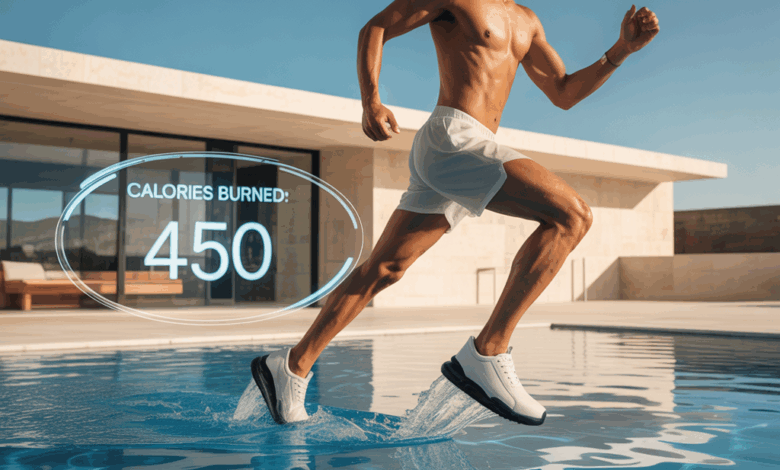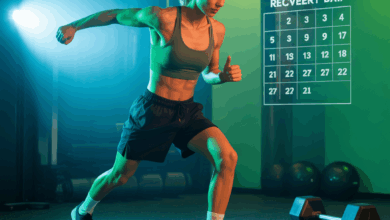How Many Calories Does Water Walking Burn? Real Numbers, Sample Workouts & Tips

Ever traded the treadmill for the pool and wondered if you were getting a “real” workout? Picture this: you push off the pool wall, feel the water resistance around your legs, and realize your heart is beating faster — but how does that translate to calories burned? If you’ve asked yourself “how many calories does water walking burn,” you’re in the right place. Below you’ll find practical answers, sample calculations, and easy-to-follow pool workouts that actually get results.
Why water walking works: low impact, high resistance
Walking in water (also called aqua walking or pool walking) uses the natural resistance of water to increase effort without stressing joints. That makes it ideal for people recovering from injury, older adults, those with arthritis, and anyone who wants a joint-friendly cardio session. The buoyancy reduces impact, while water resistance forces your muscles to work harder with every step.
How many calories does water walking burn
Calories burned depend on several variables: your body weight, walking speed/intensity, water depth, temperature, and whether you use equipment (like water weights). Fitness professionals often use MET values (metabolic equivalent of task) to estimate calorie burn. A simple formula is:
- Calories burned = MET × weight (kg) × time (hours)
Typical MET estimates for aquatic exercise:
- Light water walking: ~3.0 METs
- Moderate water walking: ~4.0 METs
- Vigorous water walking or aqua jogging: ~5.0+ METs
Example calculations (30-minute session):
- 150 lb (68 kg) — light (3.0 MET): 3.0 × 68 × 0.5 = ~102 kcal
- 150 lb (68 kg) — moderate (4.0 MET): 4.0 × 68 × 0.5 = ~136 kcal
- 150 lb (68 kg) — vigorous (5.0 MET): 5.0 × 68 × 0.5 = ~170 kcal
Heavier people burn more calories for the same activity. For instance, a 200 lb (91 kg) person might burn ~136–226 kcal in 30 minutes depending on intensity. So expect a typical 30–60 minute pool-walking session to burn anywhere from roughly 100 to 350 calories, depending on effort and body size.
Factors that change calorie burn
- Water depth: deeper water increases resistance and can increase effort (deep-water aqua jogging can burn more).
- Speed and intensity: adding intervals or faster high-knee steps increases heart rate and calories.
- Equipment: water dumbbells, paddles, or resistance gloves raise intensity.
- Form and range of motion: bigger steps and active arm movements recruit more muscle.
Sample water walking workouts (beginner to advanced)
Beginner — 20 minutes
- Warm-up: 5 minutes of easy marching in chest-high water
- Main: 10 minutes steady moderate march, focusing on full range of motion
- Cool-down: 5 minutes gentle walking and stretching
Intermediate — 30 minutes
- Warm-up: 5 minutes easy
- Intervals: 5 rounds of 3 minutes moderate + 2 minutes brisk (or high-knee)
- Finish: 5 minutes easy and mobility stretches
Advanced — 40 minutes
- Warm-up: 5–7 minutes
- Complex set: 4 rounds of 5 minutes (1 min fast high-knees + 2 min resisted walking with water dumbbells + 2 min recovery)
- Cool-down: 5–8 minutes
Pro tip: track perceived exertion or heart rate to monitor intensity. If heart rate monitoring isn’t available, aim for a “talk test” — you should be able to speak but not sing at moderate intensity.
Benefits beyond calorie burn
- Improves cardiovascular fitness with low joint stress
- Builds muscular endurance in legs, glutes, and core
- Great for rehab, prenatal fitness, and older adults
- Can help with weight loss when combined with a healthy diet
Practical tips to maximize results
- Increase resistance gradually: start without equipment and add water weights or paddles as you progress.
- Use full-body movement: swing your arms, rotate your torso, and engage your core to burn more calories.
- Mix it up: combine pool walking with strength circuits or land sessions from our workout routines page to prevent plateaus.
- Fuel properly: pair workouts with balanced meals (see our nutrition guides) for recovery and weight management.
- Consistency matters most: 30–45 minutes, 3–5 times a week, gives noticeable improvements.
Real-world examples
Marissa, a 55-year-old runner with knee pain, swapped two weekly runs for pool walking sessions. After six weeks she reported reduced knee pain, improved stamina, and a steady half-pound weight loss per week when combined with portion control. John, a 40-year-old trainer, uses 20-minute high-intensity water walking intervals twice a week to add variety to his cardio while preserving his joints.
Safety considerations
- Check pool depth and water cleanliness.
- Warm up and cool down to avoid muscle strain.
- Pregnant or recovering from surgery? Get clearance from your healthcare provider.
- Stay hydrated — you still sweat in the water.
Frequently Asked Questions
Yes. Water walking burns calories and can support weight loss when combined with a calorie-controlled diet and consistent exercise routine. Because it’s low-impact, it’s especially helpful for sustaining regular activity without joint pain.
Not necessarily “better” — just different. Treadmill walking tends to have higher calorie burn at the same perceived effort because there’s less resistance. However, water walking offers resistance and joint protection, making it more sustainable for some people. Use both as complementary tools.
Aim for 3–5 sessions per week, 30–45 minutes each for cardio and conditioning benefits. Pairing this with strength training and proper nutrition accelerates progress.
Conclusion — take the plunge
If you’ve been wondering how many calories does water walking burn, the short answer is: it depends — but it can be an effective, low-impact way to burn 100–350 calories per session depending on duration and intensity. More important than exact numbers is consistency and progression. Try one of the sample workouts above, track how you feel, and combine pool sessions with our wellness tips and nutrition guidance to maximize results.
Ready to try a pool workout this week? Start with the 20-minute beginner session, note how you feel afterward, and come back to explore more workout ideas. Share your results or questions — I’d love to hear how water walking fits into your fitness routine.





